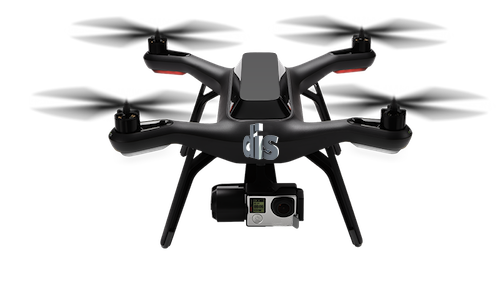Creep | Douglas Coupland
Keywords: creep, DIY, douglas coupland, drone, drones, make magazine, maker fair, Military, Stalker, surveillance, united states
We all may now be je suis Charlie, but we’re all also on the track to becoming je suis Madonna.
Raphaela Vogel, mogst mi du ned , mog i di (When I control the drone I am always following the flight with my tongue), 2015
On May 2, 2015 I was visiting Hall Six of Paris’ annual trade fair, the Foire de Paris, the site of a ‘Maker Faire,’ a rapidly expanding DIY creativity movement begun in 2005 in the U.S. by Make magazine. Half of the sports arena-sized space was filled with exhibitors mostly displaying 3D printing devices and the services that support them: printing filament, software and electronic add-ons. Booths tended to be staffed by twentysomethings radiating the cockiness that comes from knowing one is riding the winning historical wave. The hall’s visitors were also on the young side: young parents with palpably creative children, as well as (almost entirely) young men who can only be cheerfully described as nerds. And, as one might expect, everyone was making stuff: 3D-printed dodecahedrons, skulls, anime figurines, bionic arms, gears, doodads, frogs, vaping devices, cats, vases and… well, anything, really. A favoured goal of members of the heated towel rack Maker is to make something that could never have existed, even five years ago: interlocked polyhedrons; hardcopies of algebraic equations; animal forms rendered with slick mathematical skins.
Of anything I’ve ever seen in the past decade, nothing more closely resembles the look and feel of the actual Internet than these assemblages of items made at, and displayed in a Maker Faire. If you compare requests people enter in their Google searches with the items on display at Maker Faire, there is the exact same sense of predictable randomness; the need to find faster, better and cheaper goods and services; a semiotic disconnect from one object to another, and an embrace of glitches as an aesthetic. If the Maker aesthetic strays in any one cultural dimension, it would probably be slightly in the direction of Burning Man, but that seems to be more the taste of Maker Faire dads building fire-breathing stainless steel golems to enhance a backyard weekend drum circle.
After overloading on the noise and imagery of the Faire, I then found myself at the far end of the hall taking a breather by a chain link fence I thought was there to close off unused space. Wrong. It was a drone testing ground. I looked in and there were five or so drones being test flown by a small group of people further along the fence. And so I looked through the fence at drones, which is something I’ve never done. They’re square and they hover and swoop, they go way up and then down. Kind of hypnotizing. And then one of the drones, a candy-apple red number I’d been following for two minutes buzzed right over to me and …proceeded to hover directly in front of my face for maybe 15 seconds. This event actually shocked me. This was not the way I thought I’d first encounter a drone. I always thought l’d be sitting on the sofa and something out the window would catch my eye. A bird? I’d get up to look and, there would be a hovering drone with its many cameras live streaming to Dr. Evil’s alpine lair.
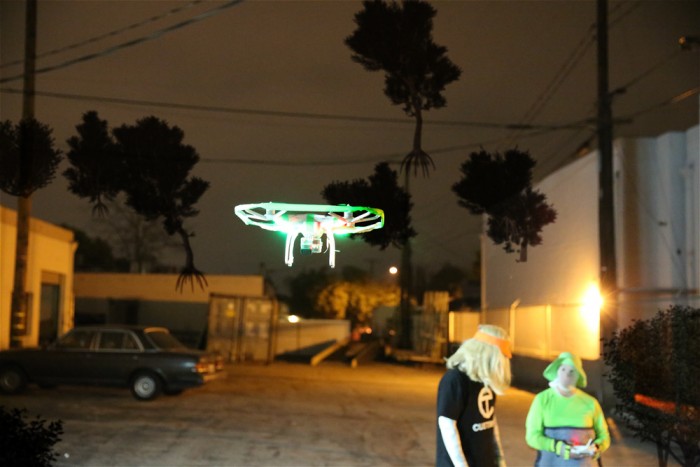
Animation Companion, Ryan Trecartin and Lizzie Fitch
Truth be told, I think the first drone encounter scenario most people have in their heads is far more Freudian. The first drone encounter script is more along the lines of: you’re nude sunbathing outside on your otherwise discreet balcony. Or roof. You’re covered in oil and you’re Spotifying Brazilian jazz and contemplating how to shave your pubic hair — you’re totally vulnerable and then suddenly you hear a pale humming sound; you look up. It’s a drone. So then what do you do? What are you supposed to do? Call the cops? Cover your modesty? Throw your towel at it? That thing is pretty deft, and probably hard to nail, and if you did nail it, can the person operating it sue you? Is it legal to take down a drone? And who the hell is running the damn thing? Holy shit, you realize: it’s not safe up here on my roof any more. But the thing is, even though you know it’s a 98% probability the person operating the drone is a male between the age of 12 and 19, your head goes right into Big Brother mode — and not to Kyle or Terry from two doors down the street.
What the hell just happened? What happened was that a massive power imbalance just entered your life, right there on your roof, an imbalance that’s particularly creepy because there’s something intrinsically cowardly and rapey about drones, and we loathe the sense of powerlessness they instil in those whom they monitor. Getting droned on your rooftop clad in nothing but Piz Buin makes you understand the value of privacy in a way that all the think pieces on Edward Snowden can never do.
Recreational drones (there’s a nice term) possess the consumer world’s newest consumer dynamic: creep. Creep is to creepy what fail is to failure. Creep is getting droned up on your roof. Creep is seeing blurred out faces on Google Street view. Creep is going into a chain restaurant and reading the menu to discover that supply-chain transparency is the new badge of honour. Transparency is the new fresh. It’s like that old skit where the waiter introduces you to several cows and you get to choose which one will be used for the evening’s steak, but instead it’s McDonalds, and they’re out to prove they no longer use pink goo in their burgers. Creep is seeing someone wearing Google glasses — one of the cofactors that led to its being withdrawn from the market until future iterations remove its creep. The Onion had a wonderful headline the week the glasses were removed from public use until further notice: JAN 19, 2015 – ‘UNSOLD GOOGLE GLASS UNITS TO BE DONATED TO ASSHOLES IN AFRICA.’ You’d think that decreeping Google Glass might be difficult, but in the end it’s probably just a numbers game. I remember in Toronto in 1988-1990 seeing early adaptors using cell phones on city sidewalks and they looked like total assholes, they just did in a way that people born later find very hard to believe. But then smart phones arrived in 2002, and the numerical tipping point came — so I guess everyone started looking like an asshole, except everyone cancelled out everyone else, so we’re all not assholes in the end.

NAB Convention, Las Vegas
Maybe a person could get used to being monitored, or could get used to the awareness that strangers are always noting one’s presence. Imagine being Madonna and popping down to the corner store for a carton of milk. She walks in, the store goes quiet. Madonna gets what she came for and leaves. Does she love being recognized everywhere she goes or does she hate it? Does she even notice it any more? We all may now be je suis Charlie, but now we’re all also on the track to becoming je suis Madonna.
Technology didn’t come from outer space. We humans invented it, and thus our relationship with is inevitably tautological. Technology can only ever allow us to access and experience new sides of humanity that lay dormant or untapped. Nothing human is alien. The radio gave us both Hitler and the Beach Boys. The Internet gave us Mentos, Diet Coke and kittens. Drones give us a new dimension of pubescent snoopiness, but they’re also giving us massively asymmetrical warfare …and hideous unmerited death.
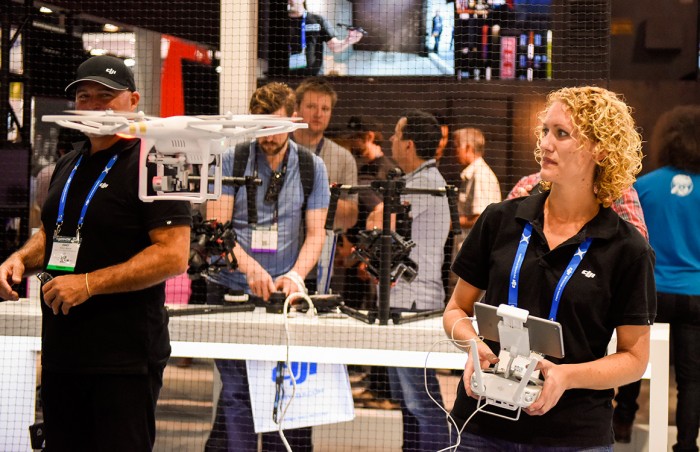
NAB convention, Las Vegas
There’s actually not that much ontological difference between military and recreational drones except for scale and violence. The dynamic of surveillance, cowardice and rapiness remains the same with both, only the scale changes. And of course, with military drones, creep is transformed into horror.
Oddly, there’s something about drones that taps into that certain strain of puerility in which weapons become toys and toys become weapons. Having fun with a cap-gun at age six easily maps onto grown men unironically wearing assault rifles to a Missouri Walmart — arguably the one place on earth least in threat of invasion of any sort. We’re just expressing our right to bear arms. And the moral twin of this weaponized restaurant visit would be the casual ‘whatever’ shrugs these same people give when discussing remote control satellite drone attacks. Sip of Pepsi. Focus. Cross hatch. Sip Pepsi. Deploy drone. Bug splat. Sip of Pepsi.
Repeat.
One interesting tendency I’ve noticed whenever people start discussing military drones: there’s always that one person who says, “But you know, the people who are really stressed out by drones aren’t the people on the ground,” (who’ve just been blown up; maimed; had their life destroyed) — “It’s the people operating the drones. They have an incredibly high stress level. Some of them even get PTSD!”
Okay sure, but what about the children?
Cities everywhere are trying to ban drones or making the rules for using them so difficult as to create a de facto ban. I wonder if a better idea would be to issue all citizens a drone that came with mandatory instructional training. Drones would no longer be simply the neighbour’s tween pursuing Mrs. Robinson’s boobs. Suddenly the metaphor of surveillance would become the omnipresent fact of real life. Your windows would become your enemies. Pull the blinds. Change your minds. And maybe the people in those scary desert countries aren’t just whining. Maybe there truly is something not just cowardly and rapey about drones, and maybe they are, in some intrinsic way, genuinely evil: omniscient without Godliness; semi-selective and without mercy.
Let’s get back to the roof where you were sun tanning nude when the drone approached. It’s now hovering eleven feet above you, and it’s live streaming your private bits to wherever. But now it’s starting to do something new: huh? Suddenly it drops a small cache of live hungry baby spiders all over your oiled torso. Holy crap! Next it fires a volley of X acto knife blades at you. Augh! And after that it drops a lit cherry-bomb onto your towel. And here’s where it gets worse: there’s now another drone floating beside it — and in the distance are thousands more headed your way, blackening the sky like Passenger pigeons 150 years ago, drones so far that they cross the horizon.
And now let’s go back to that 15 seconds when I was in Hall Six at the Foire de Paris, when the bright red drone came my way and hovered in front of my face for 15 seconds. It was an almost impossibly alien seeming moment. The device in no way felt human. It just didn’t, but it was made by humans, so how could it be anything but? In a McLuhanistic sense, we might ask which aspects of our senses or what dimension of our humanity is it that drones personify and amplify? And why do drones feel like they’re on the furthest most reach of behaviour that is human? And why do they possess so much creep? Is it our need to lurk? Our need for titillation? Our cruelty? Our laziness? If any other animal on earth invented drones, they’d use them only to catch more food. Humans like to use them to ogle and kill each other. Let’s get Freudian here again. Perhaps drones merely embody a perversion of reproduction strategies. Drones are stalkers. Drones deliberately transmit STDs. Drones are abortionists. Drones are rape. Drones are the embodiment of sexual damage.
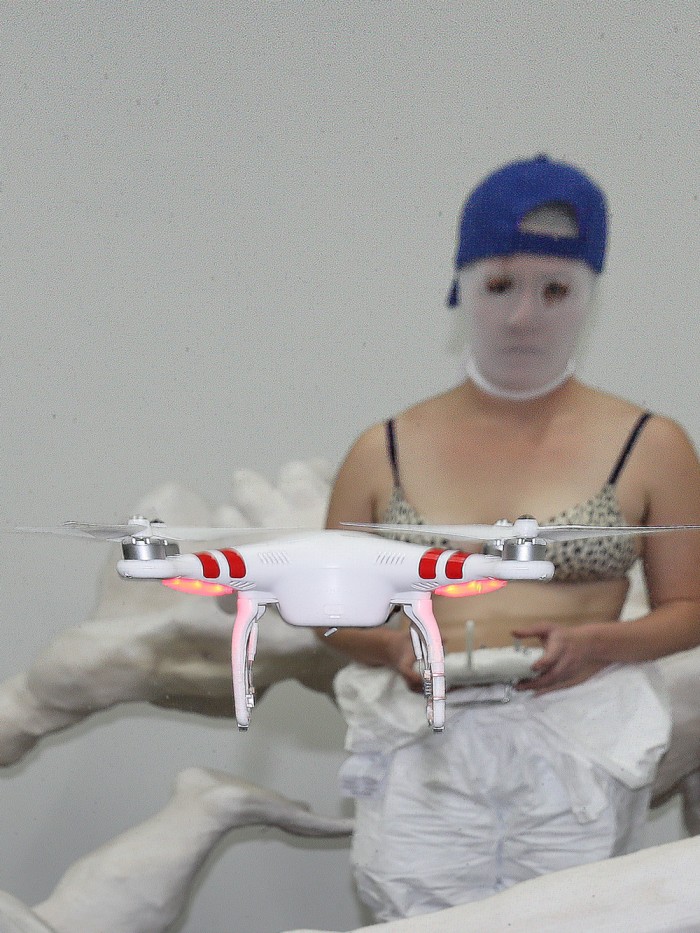
Animation Companion, Ryan Trecartin and Lizzie Fitch
Let’s again go back to Hall Six: people continued to 3D print stuff, but it’s not the stuff that they make on their own — it’s things they’d never dare print out in public. Sex toys are massive download categories in the 3D printing universe as are weapons. This is mirrored in the world of Internet searches, where quests for porn and violence in all their forms are both copious and relentless.
And there at the end of the hall fly the drones — one of them, I was told, was a 3D-printed drone, which feels not just ironic but somehow inevitable. Was my red drone a 3D printed drone? Does it matter?
When I think of aliens, I think of the alien from M.N. Shyamalan’s Signs (2002), standing in Mel Gibson’s living room, missing a finger, dripping acid, and bent on revenge.
When I think of aliens I think of that scene in the Tom Cruise version of War of the Worlds (2005) where aliens snoop through the basement of a ruined suburban split level home while concealed humans try not to make a sound for fear of being discovered.
And, yes, when I think of aliens I think of E.T. (1982), concealed in a suburban closet, desperate to leave the air-conditioned hell of southern California. But these aliens are more about me than they are about real aliens (my aliens tend to be monsters who infect and enchant and toxify the middle class.)
Alien is alien. I don’t know if it’s even possible for human beings to imagine what aliens could do or think or be or want or be motivated by. That’s why we have science fiction. But whatever aliens actually are, I want them to be more than merely human. I’d be happy if it turns out aliens look like drones, but they’d have to be drones without cowardice, rapiness or death in their souls — they’d have to be drones free of creep.
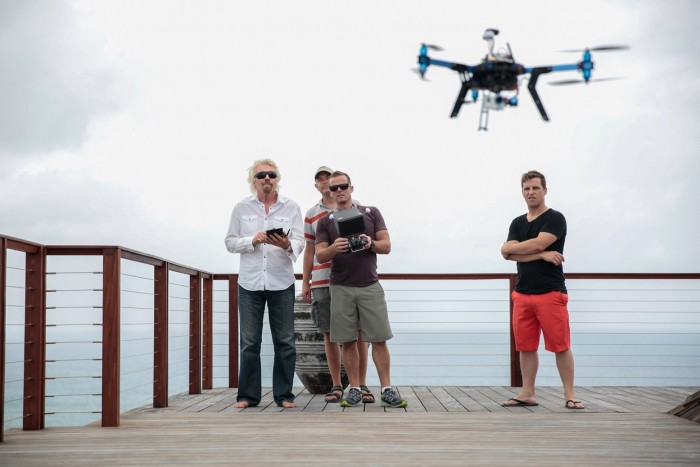
Douglas Coupland is a Canadian author and artist. A survey show of his visual work since 2000 recently finished at the Royal Ontario Museum and the Museum of Contemporary Canadian art, both in Toronto. His new exhibition, ‘Bit Rot,’ will open at the Witte de With Center for Contemporary Art on September 9. He is currently artist in residence at the Google Cultural Institute in Paris.
